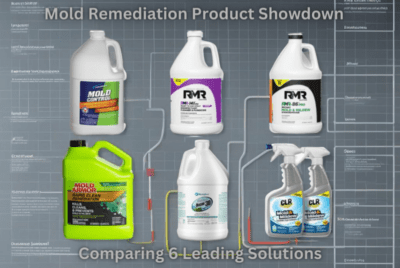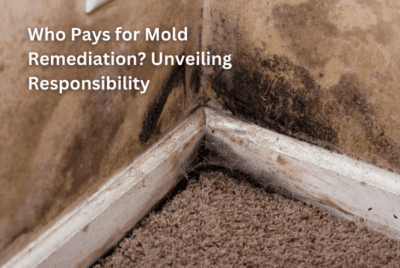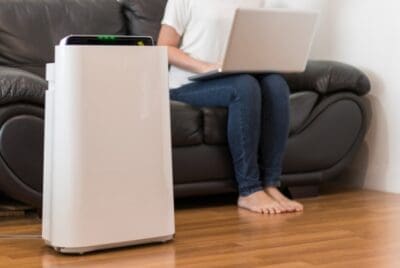When is Mold Remediation Required: A Comprehensive Guide
When should mold be removed? or when is mold remediation required? These are questions asked by many homeowners, tenants, property managers, real estate agents and even business owners who are grappling with mold problems. The ongoing struggle of humans against this silent enemy called mold is more than just a matter of aesthetics.
Understanding Mold Growth
Definition of Mold
First things first; what is mold? Mold is a tiny organism that occurs naturally in the environment. It becomes a problem when it starts growing indoors where it feeds on materials like drywall or wood used for building which then becomes persistent and widespread in the presence of moisture.
Health Risks Associated with Mold
The main worry about mold growth is not its ugly appearance only. Molds can produce allergens, irritants and sometimes toxic substances called mycotoxins too. Therefore, constant exposure to molds may lead to health complications such as allergic reactions, asthma attacks among other respiratory problems.
Indicators for Mold Remediation
Visible Signs
So, when should you do remediation? Quick answer: as soon as visible mold appears. But there are other signs besides seeing that call for remediation. Do you smell a musty earthy odor? Are there any indications of long term moisture problems like water stains? Any recurrent health problems like unexplained allergies? If yes, then think about doing some mold cleanup.
Importance of Prompt Action
Let us delve deeper into when is mold remediation necessary? Many people believe that small amounts of molds do not need to be removed. However, what you see might just be the tip of an iceberg. Also, the size or amount of visible molds does not indicate level air contamination by spores.
Necessity of Mold Remediation
Professional Determination
Mold remediation becomes necessary once an Indoor Environment Professional (IEP) conducting a mold investigation determines there’s one. The IEP will make this decision based on visual inspections done, moisture content measurements taken plus air & surface sampling carried out for identification purposes.
Misconceptions
Remember no amount of molds is safe. Therefore, if it’s established that there’s an indoor contamination problem with molds at any level it should be rectified immediately via remedial action regardless of the extent. Remediation can involve anything from minor repairs or improvements to extensive rebuilding depending on how badly affected things are.
Implications of Mold Contamination
Structural and Health Risks
Failure to do mold remediation on time can lead to structural damage of your property as well as increased repair costs. Even worse it could endanger your family’s health; some people who are more sensitive might get severe symptoms such as fever and shortness of breath while those with weak immunity systems could end up developing potentially fatal lung infections due infestations caused by molds.
Impact on Real Estate
For owners of rental houses, doing mold cleanup is important so as to maintain healthy living conditions for tenants. Landlords have a legal obligation under housing laws to provide habitable premises free from mold among other hazards. Failure to recognize signs showing presence may bring about legal wrangles.
Commercial Considerations
A house that has been rectified attracts buyers easily and raises its value in the market too. Realtors marketing properties should therefore assure potential clients that they will find no mildew there. Knowing when is mold remediation required in real estate sector can help avert possible depreciation of prices and smoothen transactions.
As for business people, undertaking mold cleanup protects their commercial establishments. Having an environment without any fungi improves workers’ productivity & health besides ensuring customer satisfaction which could enhance reputation management efforts made towards meeting these standards also keep one safe from lawsuits based on health safety compliance requirements since failure comply may result into legal battles.
Insurance and Financial Considerations
Insurance Coverage
What about insurance claims? Well, understanding when mold remediation is required can help assess claims effectively. Most insurance policies will cover the cost of getting rid of mold if it was caused by a “covered peril,” which means something that your policy specifically covers.
However, many homeowner insurance policies do not provide coverage for any kind of damage caused by mold, especially when it results from lack of maintenance. So always keep an eye out for possible sources of molds. Quick fixes for leaks, proper ventilation and control over indoor humidity can go a long way in preventing this.
Remediation Strategies
Tailored Approaches
Different types of molds may require different remediation approaches. For example, Stachybotrys chartarum commonly known as ‘black mold’ has been associated with serious health problems hence its removal should be done immediately.
Keeping up with these changes would mean staying conversant with current mold remediation technologies and methods. It would be prudent therefore to engage the services of a knowledgeable professional who is well versed in dealing with such evolutions.
Professional Involvement
The intricacies involved here can only be handled by highly skilled individuals who have undergone comprehensive training on every aspect regarding this process thus giving them ability to follow through all steps diligently starting from controlling contamination at its source upto discarding contaminated materials while ensuring proper containment of fungi.
To sum it up, knowing when is mold remediation needed is crucial not only for maintaining structural integrity of your property but also preserving its beauty and preventing any negative health impacts. A rectified home becomes safe inviting healthy place free from dangers brought about by excessive mold growths.
By being aware about the situations that call for mold removal, you save yourself from numerous other issues like legal tussles lowered productivity rates reduced property worth higher repair bills as well as staked insurance claims – all which arise when one fails to act promptly or takes wrong actions against this menace. Never forget that – if treated right there’s no enemy within!
Keep watch against moisture damage within your homes; frequently inspect areas prone to dampness especially after leakages or floods. Taking an active stand against molds helps prevent them from spreading further thus ensuring the safety of your loved ones, tenants or workers.
Is mold remediation necessary? Absolutely! Is it complicated? Definitely. But don’t let that stop you. Get yourself educated, make timely decisions and hire competent personnel to help you navigate through these fluctuations and inconsistencies of the mold removal process. Apart from being a requirement, living in a space without this fungi is also our entitlement, isn’t it?
Post-Remediation Verification
Last but not least ensure there’s post-remediation verification once all remedial measures have been taken. Commonly referred to as “clearance test”, this final step proves absence of any remaining spores within your house and guarantees it’s fit for occupation.
Conclusion: Taking Responsible Action
Importance of Professionalism
Mold remediation is not something you can do by yourself as there are risks involved which require expertise skillset proper equipment awareness on how best approach them safely given their reactive nature. Anyone attempting this without experience might end up making mistakes that would lead to more contamination causing different strains even those previously unaffected.
If you discover mold or suspect its presence, take immediate action. Time is crucial; every hour you waste thinking is an hour that allows the mold to grow and spread through your building. Call in a professional to inspect the property as soon as possible.
Commitment to Safety
More than just killing it, mold remediation works by controlling contamination, removing all visible molds, cleaning up after them and preventing their future regrowth elsewhere in the same area plus drying everything completely. The delay made in dealing with this problem the wider it becomes hence taking longer time in remediation which also makes it complex and costly too.
Proactive Management
Are you willing to wait until things get worse necessitating for major repairs? Or will you do something now so as not to cause more damage later on? Though expensive at times; one should remember that prevention is better than cure when it comes down to dealing with molds! Would you rather let mold grow throughout your building – eating away at its structure as well as affecting people’s health – and spend thousands on fixing these issues or act now while they can still be managed inexpensively?
Recap: Professional Remediation Process
Just to recap, professionals do the remediation process. They comply with strict rules that aim at minimizing the spread of spores during cleaning and identifying all sources of moisture which should be eliminated to prevent future growth.
Actions may include cleaning mold off surfaces with detergent and water then drying them well. In extreme cases, some parts of your house such as drywall sections or heavily infested carpets might need removal.
Usually there is a detailed record kept about what has been done during remediation; this often involves taking photos and videos so that you can see for yourself that the work has been done properly. After removing the visible mold growth, post-remediation testing must be done to ensure no more mold is left behind.
Financial Investment
Certainly, remediating takes resources – time, effort, money -, nevertheless it’s an investment into people living in your property health wise while at the same time ensuring long-term stability and value of your real estate. It’s not about if you can afford it but rather if you can afford not doing anything about it.
Final Thoughts
Ultimately knowing when one should have mold removed enables one to become responsible landlord or landlady who deals with issues beforehand thus keeping safe environments around those living under their care or even working spaces too for that matter because after all wouldn’t anybody like having clean offices, homes etc.?




